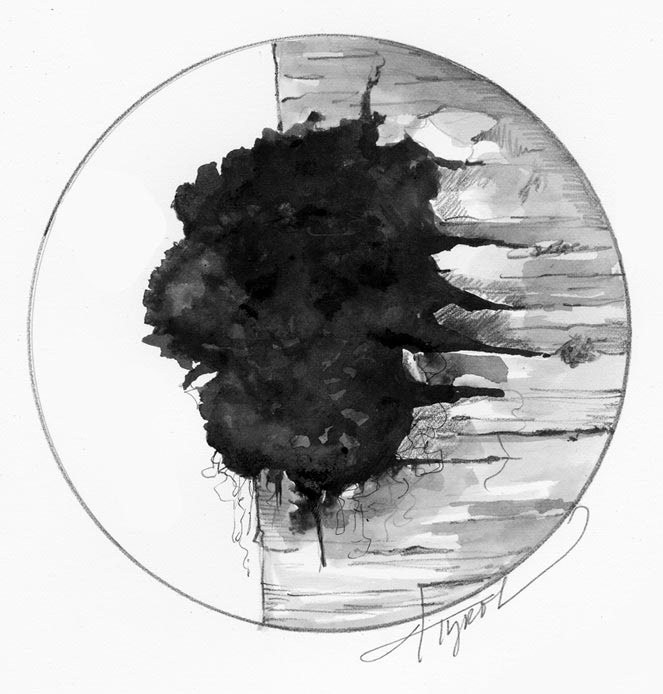
If you’ve seen a well-developed clinker polypore (Inonotus obliquus) protruding from a tree, there’s a good chance that you remember it. This fungus causes large, black, cinder-like growths, sometimes neatly conical, but often rough and ragged. Also called the birch polypore, you can find these conks on all species of birch, as well as on hophornbeam and occasionally on other hardwoods. By the time the fungal tissue is visible on the outside, the inside of the tree is likely to be rotten to the core. Much is yet to be learned about this organism, but it seems that infection often occurs after another fungus, called Nectria, has invaded a tree. Injuries, too, allow the clinker polypore to get a foothold, and once it has settled in, death – though sometimes a slow death – seems to be inevitable.
Interestingly, the big black growths you see produce no spores, but probably function instead to prevent the tree’s wound from closing, which would deprive the fungus of oxygen. Inside a tree, the clinker polypore grows more rapidly than many other heart-rotting fungi. The fungus expands by infecting new tissues at the edge of the sterile conks, of which there are often several on an infected tree.
Spores are produced only after the tree has died, sometimes on trees that have been dead for as long as six years. The spore-bearing surface is hard to find, even in birch stands in which the sterile conks abound, because they are small, short lived, and often eaten by insects.
The clinker polypore causes significant loss of birch timber, but it has coexisted with birches around the world for millions of years, is not devastating to the birch population, and there is no known way to control it. Most heart-rotting fungi attack only a few kinds of trees and most trees are vulnerable to only a few heart-rotting fungi. In the grand scheme of things, it’s not desirable for trees to live forever. Disease and death are an integral part of healthy forests. Although insects and diseases – the naturally occurring terminating and recycling agents – sometimes kill a few individuals before we humans think they should, without them, life as we know it would cease to be.
And Inonotus obliquus, it turns out, may even be quite useful.
In Russia and many other countries, the sterile conks are called chaga and are widely used as a substitute for tea. Over many centuries, extracts from the conks have been credited with curing just about every imaginable ailment. This, naturally, gets the skeptics fired up, and indeed, not many controlled trials on ailing humans have been carried out. But in the lab, various chaga constituents have been found to reduce the growth of some kinds of cancer cells, to trigger and support immune responses, and to have anti-viral properties.
In Aleksandr Solzhenitsyn's novel, Cancer Ward, published in 1968, a country doctor noticed that poor peasants never got cancer. He attributed this to the fact that they drank infusions from chaga because they couldn’t afford real tea. Solzhenitsyn used chaga himself when he had cancer and in Russia it has been approved as an anti-cancer drug since 1955.
The woodland Cree of Canada called this fungus pokasan and, as well as making tea from it, they dried the inside part of the conks to use as tinder for starting fires. Small pieces were put into pipes to help keep damp tobacco burning.
This fungus degrades the lignin in wood, and leaves the stringy cellulose component relatively unaffected, which is just what chemicals are used for in the process of making pulp for paper. Now there is interest in biopulping, which involves using fungi of this kind instead of potentially polluting chemicals.
Delignified wood is said by one reputable forest pathologist to be useful fodder for deer and moose. Jim Worrall, at SUNY-Syracuse, notes that ungulates have the right gut microorganisms to break down delignified wood and he has seen evidence of moose feeding on decayed logs in Alaska.
Quite a versatile job description for a fungus, the group usually considered to be true low life – so perhaps it shouldn’t surprise us that recent DNA analysis suggests that fungi are more closely related to animals than to plants. You could almost survive on it: medicine, fire, fodder for the cattle, and a reasonably good tasting cup of tea while reading the Fungi Times.


Discussion *